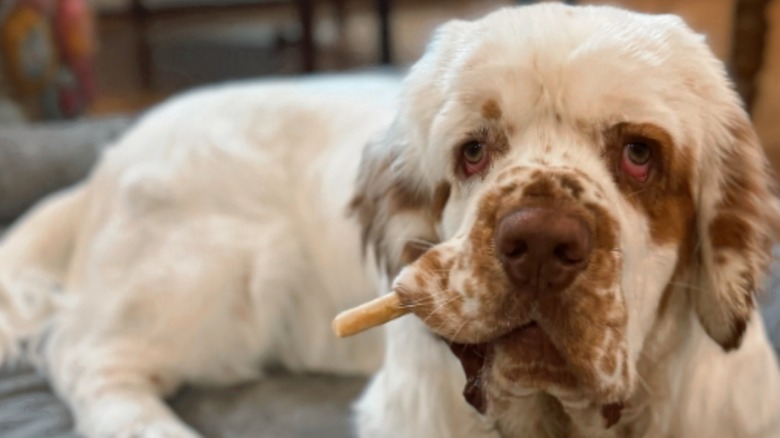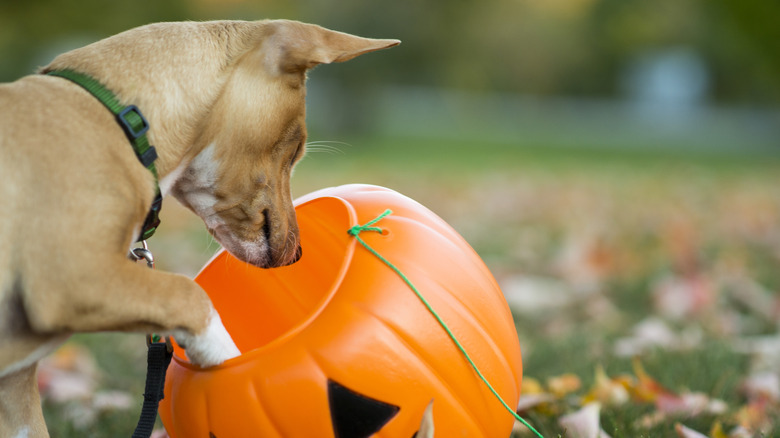Clumber Spaniel Discovers Fall Decorations And Turns Into A 'Pumpkin Goblin'
Autumn transforms homes into mini harvest scenes with pumpkins by the door, hay bales tucked in corners, and garlands that smell faintly of spice. For dogs, those changes can feel like their world has just rearranged overnight. Most sniff and move on, but others take a more theatrical approach, deciding every new object must be investigated, guarded, or, if the mood strikes, conquered.
@worldofpudge Pudge has decided that the fall pumpkin arrangement in front of the house is not up to his standards and will be taking matters into his own hands #halloween #lifestyle #clumberspaniel #puppytiktok #fypシ
One Clumber spaniel, Pudge, embraces all the seasons, including enjoying fall decor. All excited, the spaniel bounded toward a cluster of pumpkins and treated them like unexpected visitors that needed sorting out immediately — or perhaps he thought they were his trick-or-treat rewards.
That seasonal frenzy is exactly why you should check that your Halloween decorations are safe for your pet. Many items that look festive, such as candles, string lights, or plastic pumpkins, can seem like toys or snacks to a curious dog. Soft fabrics, non-toxic paints, and battery-operated lights are safer choices if your dog likes to explore. Keeping decorations out of reach or securing them in place lets pets join in the fun without the risk of chewing hazards or accidental spills. That way, your pumpkin goblin can celebrate the season without any frightful surprises.
Why dogs get so fascinated by new things
Dogs are highly attuned to changes in their surroundings, and new objects rarely escape their attention. Whether it's a pumpkin on the floor or a wreath hanging at nose level, every unfamiliar shape carries its own scent, texture, and meaning. Dogs rely more on smell and touch, so sniffing and nudging help them gather clues about who's touched an object, where it's been, and whether it belongs in their space. For many dogs, especially those that thrive on routine, this quiet investigation is their way of restoring balance after their environment changes.
Reactions to new objects differ widely as confident dogs may charge in, nudging or pawing a new item, while more cautious ones might circle or bark from a distance. If your dog is scared of everything, it's best to take the time to let your dog acclimate on their own terms. Build confidence by holding a small treat between your fingers or behind your thumb so your dog catches the scent and moves toward it. You can then guide your hand to the new item to encourage them to explore. The instant their nose follows, let them have the treat. With a little time, your dog may turn into a pumpkin goblin, too.

